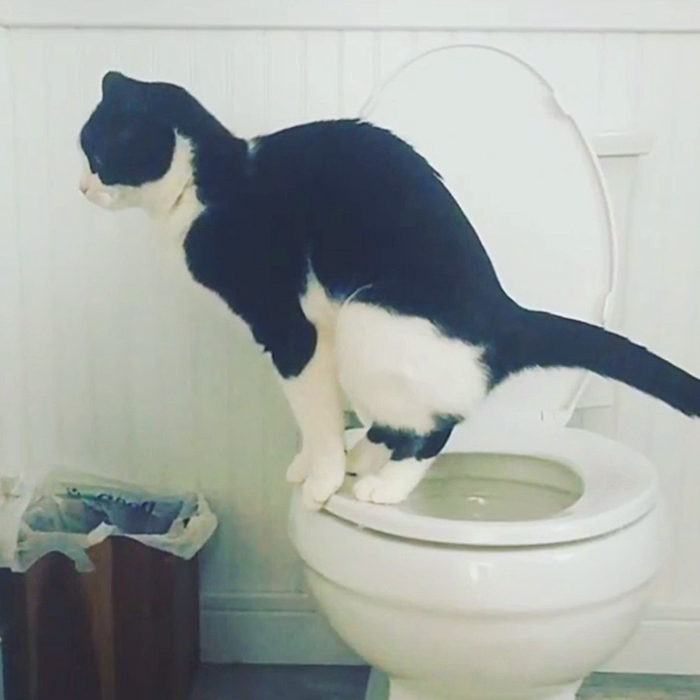They are making several great pointers about How to Dispose of Cat Poop and Litter Without Plastic Bags in general in the content directly below.

Intro
As cat owners, it's important to bear in mind exactly how we take care of our feline friends' waste. While it might appear convenient to flush cat poop down the bathroom, this practice can have damaging effects for both the atmosphere and human health and wellness.
Alternatives to Flushing
Thankfully, there are safer and more accountable means to get rid of feline poop. Take into consideration the following options:
1. Scoop and Dispose in Trash
One of the most typical approach of taking care of pet cat poop is to scoop it right into a naturally degradable bag and toss it in the garbage. Be sure to use a specialized clutter inside story and deal with the waste immediately.
2. Usage Biodegradable Litter
Select eco-friendly pet cat clutter made from products such as corn or wheat. These clutters are eco-friendly and can be safely taken care of in the garbage.
3. Hide in the Yard
If you have a lawn, consider burying pet cat waste in an assigned area away from veggie gardens and water resources. Make certain to dig deep sufficient to prevent contamination of groundwater.
4. Mount a Pet Waste Disposal System
Purchase an animal garbage disposal system particularly designed for feline waste. These systems use enzymes to break down the waste, lowering odor and ecological impact.
Health and wellness Risks
Along with environmental worries, purging cat waste can likewise posture health and wellness dangers to human beings. Cat feces may consist of Toxoplasma gondii, a bloodsucker that can create toxoplasmosis-- a possibly severe disease, especially for expecting ladies and people with damaged body immune systems.
Ecological Impact
Purging feline poop introduces dangerous virus and parasites right into the water system, posing a considerable risk to aquatic ecological communities. These contaminants can negatively influence aquatic life and compromise water high quality.
Final thought
Responsible family pet possession prolongs past providing food and shelter-- it additionally entails correct waste management. By refraining from flushing cat poop down the commode and going with alternate disposal methods, we can reduce our ecological footprint and secure human health.
Why Can’t I Flush Cat Poop?
It Spreads a Parasite
Cats are frequently infected with a parasite called toxoplasma gondii. The parasite causes an infection called toxoplasmosis. It is usually harmless to cats. The parasite only uses cat poop as a host for its eggs. Otherwise, the cat’s immune system usually keeps the infection at low enough levels to maintain its own health. But it does not stop the develop of eggs. These eggs are tiny and surprisingly tough. They may survive for a year before they begin to grow. But that’s the problem.
Our wastewater system is not designed to deal with toxoplasmosis eggs. Instead, most eggs will flush from your toilet into sewers and wastewater management plants. After the sewage is treated for many other harmful things in it, it is typically released into local rivers, lakes, or oceans. Here, the toxoplasmosis eggs can find new hosts, including starfish, crabs, otters, and many other wildlife. For many, this is a significant risk to their health. Toxoplasmosis can also end up infecting water sources that are important for agriculture, which means our deer, pigs, and sheep can get infected too.
Is There Risk to Humans?
There can be a risk to human life from flushing cat poop down the toilet. If you do so, the parasites from your cat’s poop can end up in shellfish, game animals, or livestock. If this meat is then served raw or undercooked, the people who eat it can get sick.
In fact, according to the CDC, 40 million people in the United States are infected with toxoplasma gondii. They get it from exposure to infected seafood, or from some kind of cat poop contamination, like drinking from a stream that is contaminated or touching anything that has come into contact with cat poop. That includes just cleaning a cat litter box.
Most people who get infected with these parasites will not develop any symptoms. However, for pregnant women or for those with compromised immune systems, the parasite can cause severe health problems.
How to Handle Cat Poop
The best way to handle cat poop is actually to clean the box more often. The eggs that the parasite sheds will not become active until one to five days after the cat poops. That means that if you clean daily, you’re much less likely to come into direct contact with infectious eggs.
That said, always dispose of cat poop in the garbage and not down the toilet. Wash your hands before and after you clean the litter box, and bring the bag of poop right outside to your garbage bins.
https://trenchlesssolutionsusa.com/why-cant-i-flush-cat-poop/

As a keen reader on Don’t flush cat feces down the toilet, I thought sharing that portion was worth the trouble. Enjoyed reading our content? Please share it. Help other people find it. Thanks for your time invested reading it.
Book Your Appointment